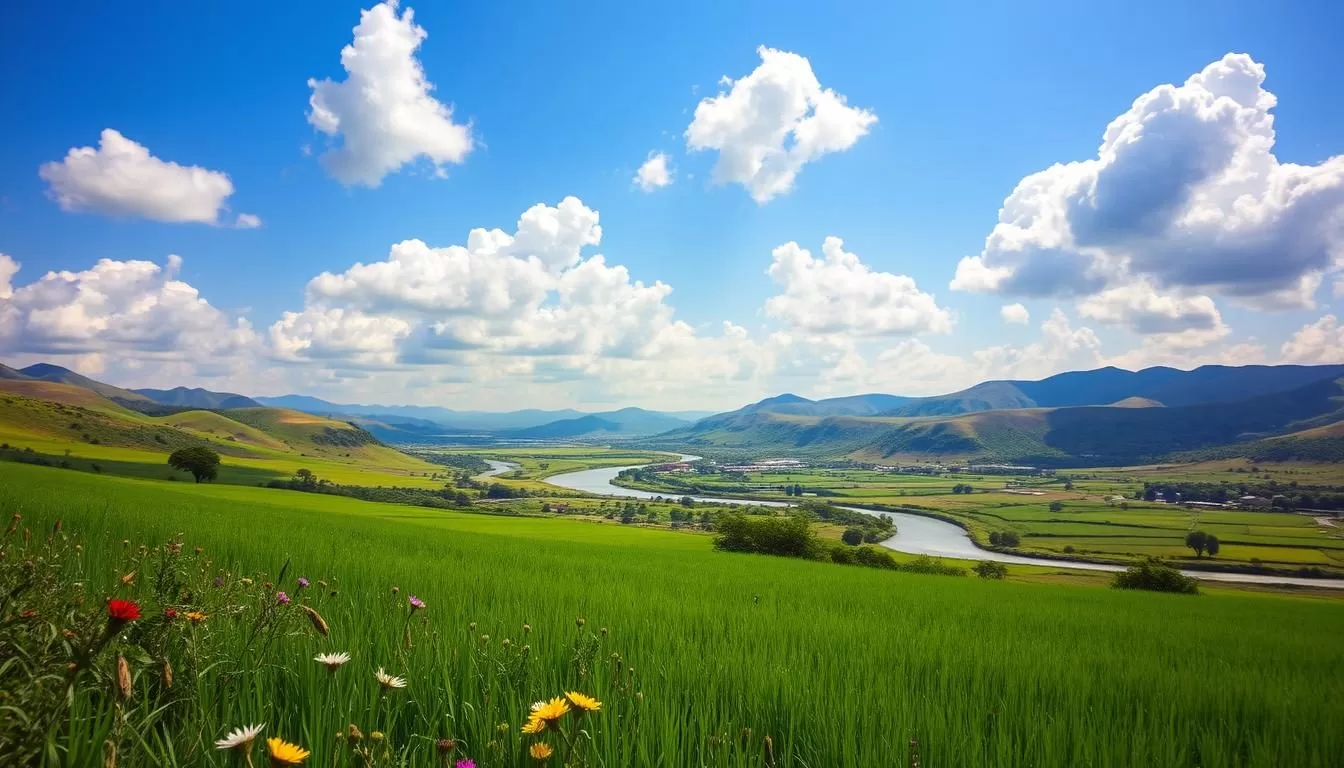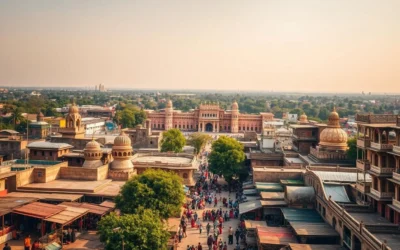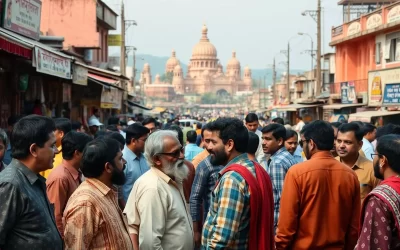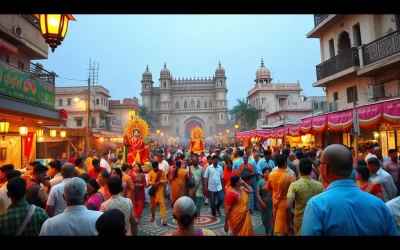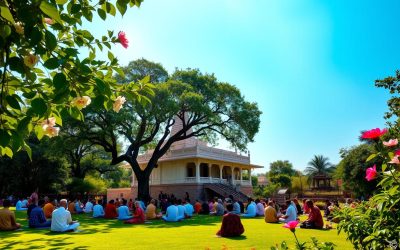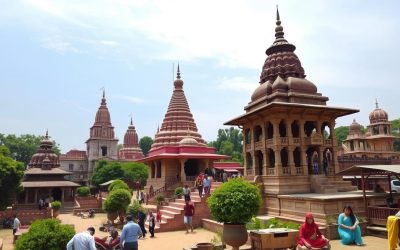✓ Accommodations✓ Flights✓ Rental Cars✓ Tours & Activities
Planning a trip to Bihar requires understanding its unique seasonal patterns to make the most of your visit to this historically rich Indian state. Bihar experiences four distinct seasons throughout the year, each offering different advantages and challenges for travelers.
The best time to visit is between October and March, when the weather is more likely to be warm, sunny, and dry. Understanding Bihar’s weather patterns is essential as extreme temperatures and monsoon rains can significantly impact your travel experience.
This comprehensive guide will help you navigate Bihar’s climate variations to plan your perfect trip, whether you’re interested in cultural exploration, religious pilgrimages, or natural attractions.
Understanding Bihar’s Climate Patterns
Understanding the climate patterns of Bihar is essential for planning a trip that makes the most of this Indian state’s natural beauty. Bihar’s climate is influenced by its geographic location, which results in a diverse range of weather conditions throughout the year.
Geographic Location and Its Impact on Weather
Bihar’s location in the eastern part of India contributes to its climate, which is similar to that of other north-eastern Indian cities like Calcutta, Varanasi, and Lucknow. The state’s geography plays a significant role in shaping its weather patterns, with the Ganges River and other water bodies influencing local climate conditions.
The Four Distinct Seasons of Bihar
Bihar experiences four well-defined seasons: winter (October-February), summer (March-June), monsoon (June-September), and post-monsoon (October-November). Each season transforms the landscape and atmosphere, offering different travel experiences. The transition periods between these seasons often provide pleasant weather conditions, ideal for sightseeing.
| Season | Months | Characteristics |
|---|---|---|
| Winter | October to February | Cool and dry |
| Summer | March to June | Hot and dry |
| Monsoon | June to September | Hot and humid |
| Post-monsoon | October to November | Pleasant and calm |
The best months to visit Bihar are from November to March, when the weather is generally pleasant, making it ideal for sightseeing. Understanding the characteristics of each season helps you plan your trip during the best time of year.
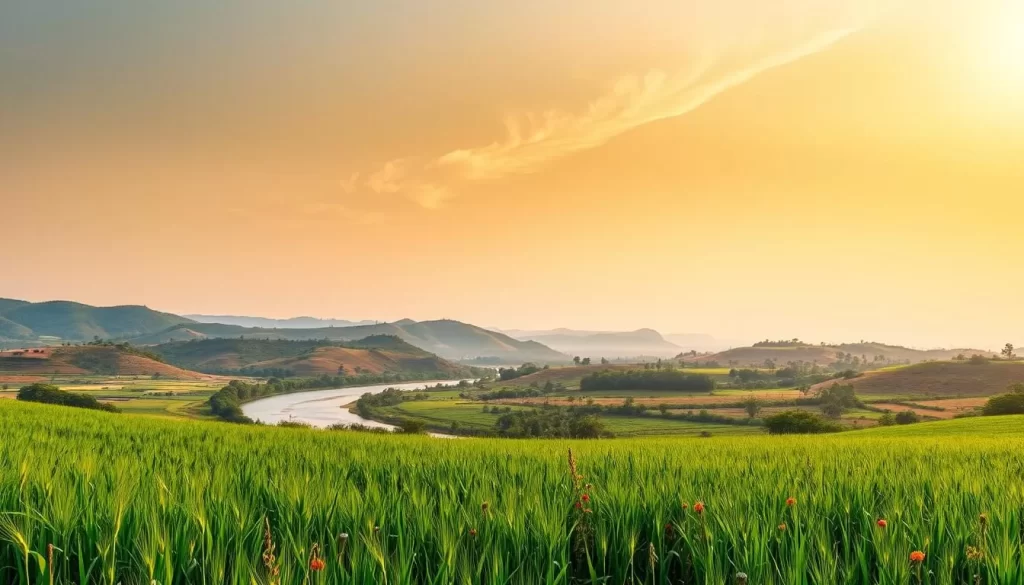
Winter in Bihar: October to February
From October to February, Bihar experiences winter, a season that is considered the best time to visit this Indian state due to its favorable weather. The comfortable temperatures and dry conditions make it an ideal period for exploring the region’s rich cultural heritage and natural beauty.
Temperature Ranges and Weather Conditions
During winter, Bihar’s temperature ranges from a minimum of around 5°C to a maximum of 20°C. The weather is generally dry and sunny, making it perfect for outdoor activities.
Popular Winter Festivals and Events
Winter in Bihar is marked by several festivals and events, including the Makar Sankranti celebrations in January, which signify the beginning of the sun’s journey towards the northern hemisphere. These festivals add to the state’s vibrant cultural tapestry.
Best Winter Activities and Attractions
Some of the top activities to enjoy during winter in Bihar include exploring the ancient Nalanda University ruins, a UNESCO World Heritage Site, and taking a river cruise along the Ganges. Wildlife enthusiasts can visit the Valmiki National Tiger Reserve for more frequent animal sightings.
| Activity | Location | Best Time |
|---|---|---|
| Explore Nalanda University ruins | Nalanda | October to February |
| River cruise along the Ganges | Ganges River | October to February |
| Visit Valmiki National Tiger Reserve | Valmiki Nagar | October to February |
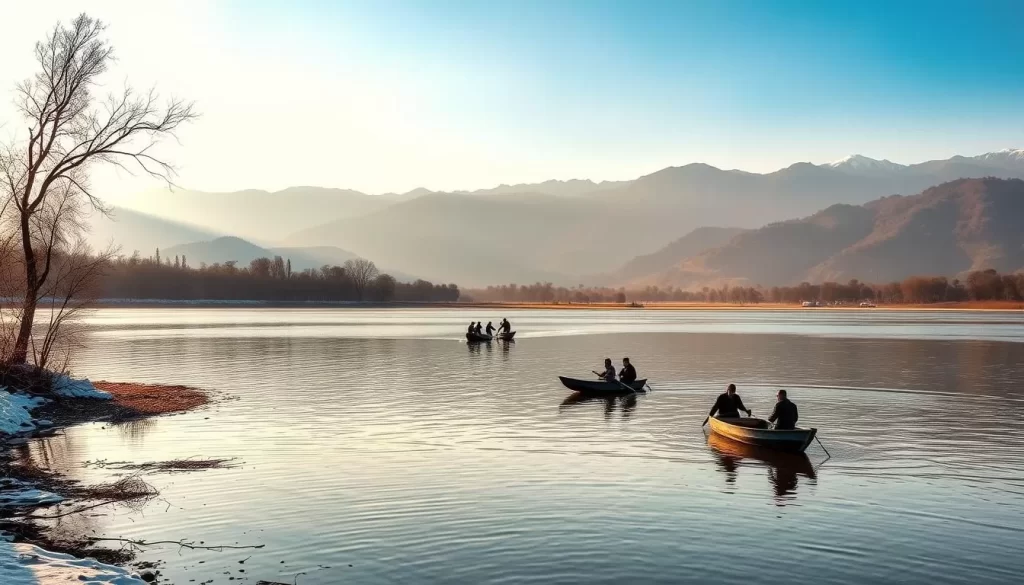
Summer in Bihar: March to June
When visiting India, particularly Bihar, during the summer, you can expect a blend of heat and exciting activities. The summer season, which spans from March to June, brings with it a unique set of experiences for travelers.
Heat Patterns and Humidity Levels
During the summer months, Bihar experiences a significant rise in temperature, often climbing into the 30s. The heat is accompanied by varying levels of humidity, making it essential for visitors to be prepared.
Tips for Handling the Summer Heat
To make the most of your trip, consider visiting Bihar’s indoor attractions, such as the Patna Museum and Bihar Museum, which offer climate-controlled environments. You can also explore the mango orchards of Digha and Bhagalpur, where numerous varieties of mangoes are available for tasting.
Summer-Specific Attractions Worth Visiting
Some of the top attractions to visit during the summer include:
- Wildlife viewing at Valmiki Tiger Reserve, where animals frequently visit water sources during the hot weather.
- Vibrant street food scenes in cities like Patna and Gaya, with special seasonal offerings.
- Religious sites like the Mahavir Mandir and Harmandir Takht, which offer both spiritual significance and shelter from the heat.
Visiting Bihar during April and May can be particularly interesting, as the wildlife tends to congregate around waterholes, making it a great time for game drives.
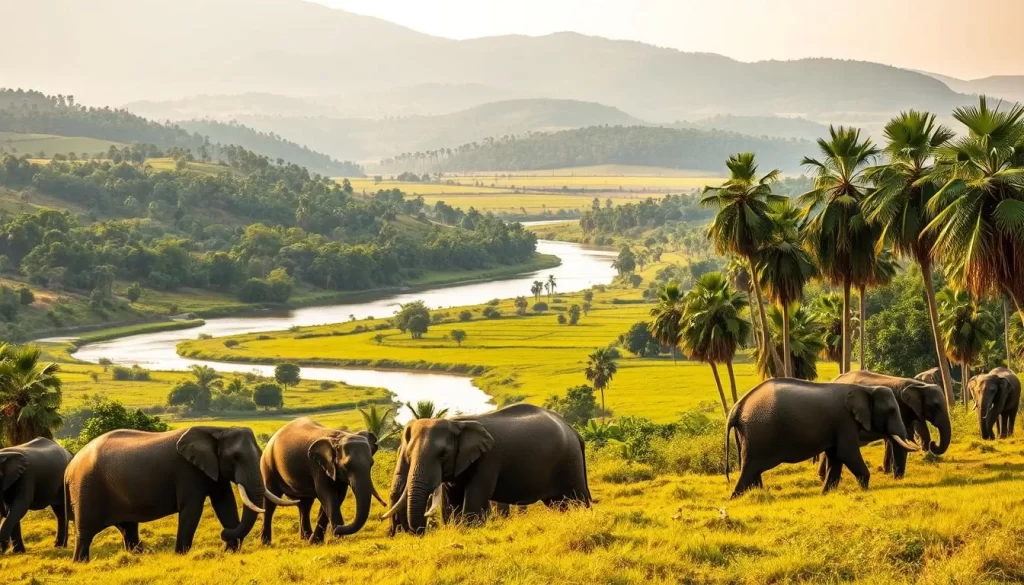
Monsoon Season: June to September
From June to September, Bihar experiences a dramatic change with the onset of the monsoon. This period is characterized by heavy rainfall and high humidity, transforming the landscape into a lush green scenery.
Rainfall Patterns and Potential Challenges
The monsoon brings substantial rainfall to Bihar, with the region experiencing heavy downpours from mid-June to mid-September. This can lead to flooding, making some areas challenging to navigate. It’s essential to be aware of the weather forecast during this time to plan your activities accordingly.
The Lush Transformation of Bihar’s Landscape
Despite the challenges, the monsoon season transforms Bihar’s landscape into a vibrant and lush green. The increased rainfall rejuvenates the local flora, making it an ideal time for nature lovers and photographers.
Monsoon Travel Precautions and Recommendations
To make the most of your visit during the monsoon, consider the following precautions:
- Pack waterproof gear, including raincoats and quick-dry clothing.
- Choose accommodations in elevated areas to avoid flood-prone zones.
- Be flexible with your itinerary to accommodate sudden rain showers.
You should also focus on indoor attractions like museums and temples during heavy rainfall.
| Aspect | Pre-Monsoon | During Monsoon |
|---|---|---|
| Weather | Hot and dry | Heavy rainfall and high humidity |
| Landscape | Dry and barren | Lush and green |
| Ideal Activities | Outdoor explorations | Indoor attractions and photography |
Visiting Bihar during the monsoon can be a unique experience, with the right preparations. The best time to visit depends on your preferences, but Aug Sep can be particularly beautiful due to the lush landscapes.
Bihar, India: Best Months for a Weather-Savvy Trip
The ideal time to visit Bihar is a critical piece of information for travelers seeking to explore this Indian state without the hindrance of unfavorable weather conditions. Bihar’s climate varies significantly throughout the year, making certain months more suitable for tourism than others.
October to March: The Ideal Window
The best time to visit India, specifically Bihar, is between October and March. During this period, the weather is generally warm, sunny, and dry, making it perfect for sightseeing and outdoor activities. The north offers clear blue skies, enhancing the scenic beauty of the region.
November to February: The Sweet Spot
For cultural tourism and historical site visits, the months from November to February are particularly favorable due to the comfortable temperatures. This period allows for extended exploration without the discomfort of extreme temperatures.
Weather Considerations for Different Tourist Activities
Different activities are best suited to specific times of the year. For instance, wildlife enthusiasts should target November to April for optimal viewing at places like Valmiki Tiger Reserve. Photography tours benefit from the clear light of winter mornings and the dramatic skies of October and March.
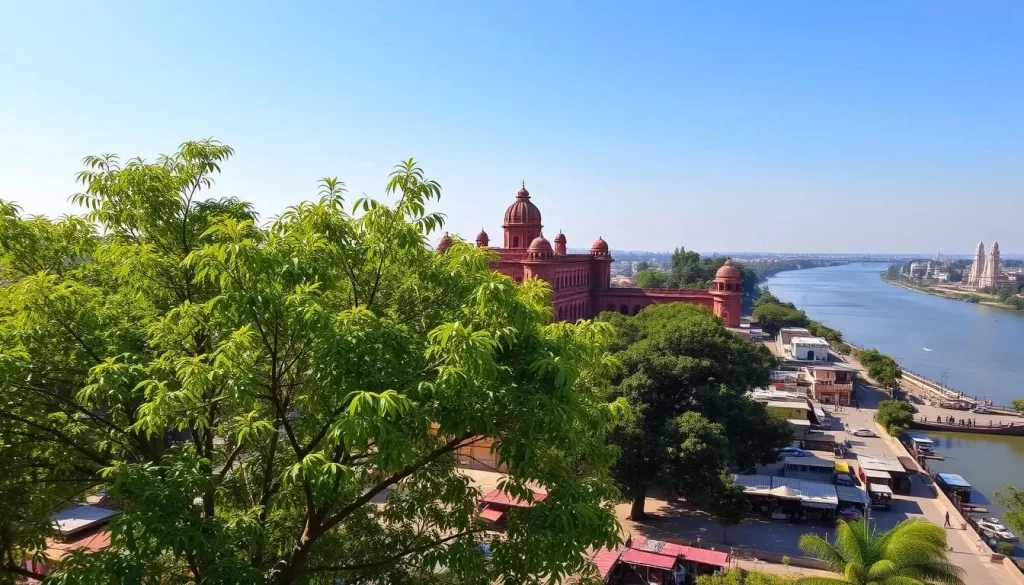
By considering the season and its impact on scenery and activities, you can plan a trip that is both enjoyable and memorable. Whether you’re interested in cultural tourism, wildlife, or simply enjoying the scenery, Bihar has something to offer during its best months.
Region-Specific Weather Variations in Bihar
As you travel through Bihar, you’ll notice that the weather can differ substantially from one region to another. This variation is due to the state’s diverse geography, which influences the climate across different areas.
Northern Bihar vs. Southern Bihar Climate Differences
The climate in Northern Bihar is different from that in Southern Bihar. For instance, Bodh Gaya and its surrounding areas experience slightly warmer winters than Northern Bihar, making December to February particularly pleasant for visitors. In contrast, the Valmiki Tiger Reserve in northwest Bihar has a unique microclimate due to its forest cover, resulting in cooler summers and more moderate temperatures throughout the year.
Patna and Central Bihar Weather Patterns
Patna, being the capital city, represents the weather patterns of Central Bihar. The region experiences a mix of the characteristics seen in both Northern and Southern Bihar. Riverside attractions along the Ganges in this area face higher humidity levels throughout the year but enjoy cooling breezes during summer evenings.
Micro-Climates Around Major Attractions
Bihar is home to several micro-climates around its major attractions. For example, the Rajgir Hot Springs area remains warmer during winter due to geothermal activity. Similarly, the hills around Munger create a distinct microclimate with slightly higher rainfall and cooler temperatures compared to the surrounding plains. Understanding these micro-climates can help you plan your visit to Bihar during the best months, ensuring a more enjoyable experience.
Conclusion: Planning Your Weather-Perfect Bihar Trip
As you plan your trip to Bihar, India, understanding the best time to visit is crucial for a memorable experience. Armed with comprehensive knowledge about Bihar’s seasonal patterns, you can now confidently plan a weather-appropriate trip to this historically significant Indian state.
The period from October through March emerges as the clear winner for most travelers, with November to February offering the absolute sweet spot for comfortable exploration. Consider your specific interests—whether cultural sightseeing, wildlife viewing, or festival attendance—when fine-tuning your travel dates within this broader recommended window.
Regional variations exist within Bihar, with northern areas generally cooler and wetter than southern districts. Regardless of when you visit, proper preparation for Bihar’s weather conditions will significantly enhance your travel experience in this fascinating region of North East India. While the monsoon months of June through September present certain challenges, they also offer unique perspectives of Bihar’s lush landscapes for adventurous travelers.
By choosing the right time to visit and being prepared, you can have a fulfilling trip to Bihar, enjoying its rich cultural heritage and natural beauty.
The above is subject to change.
Check back often to TRAVEL.COM for the latest travel tips and deals.
